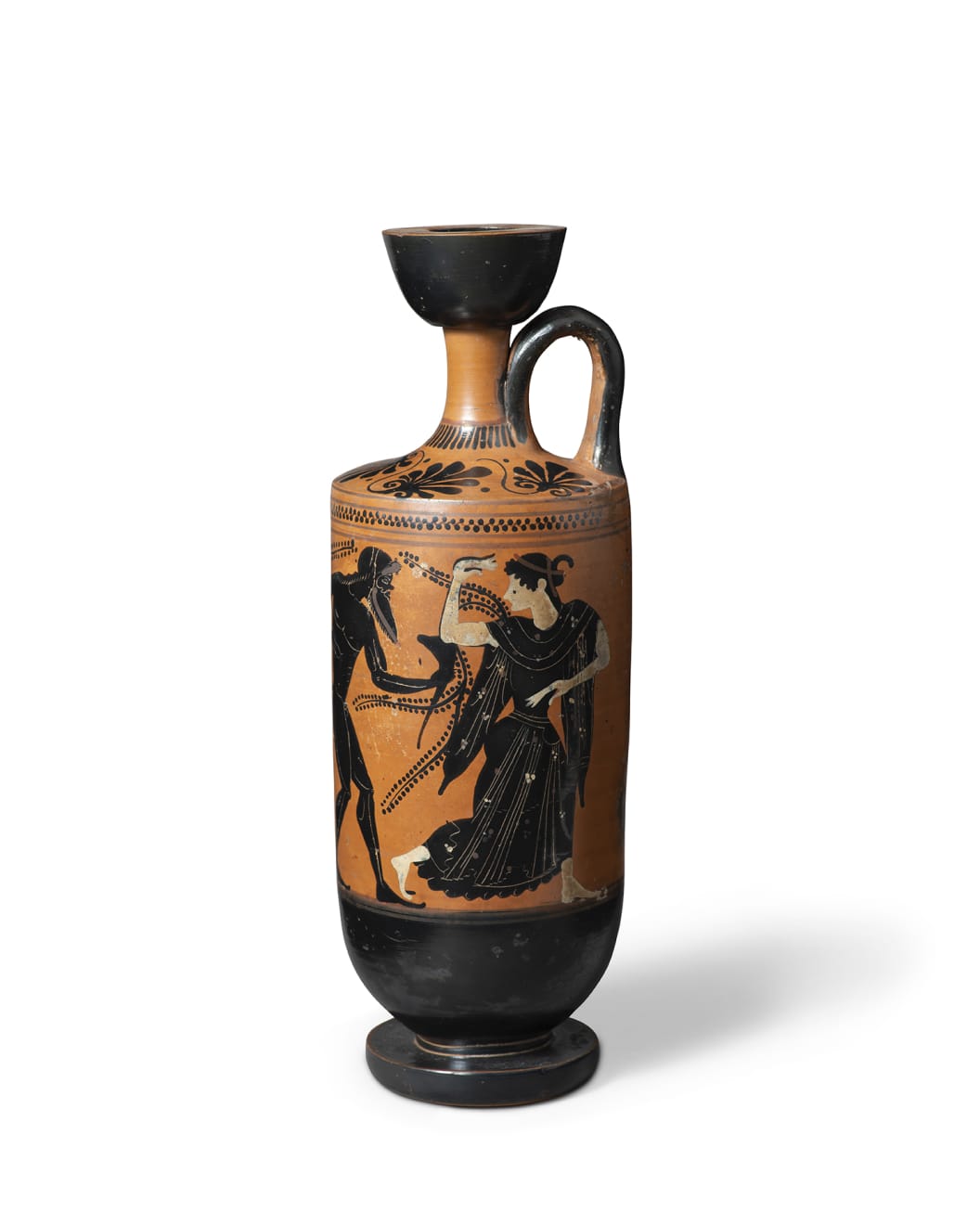Greek
An Attic black-figure lekythos, near to the Group of the Cracow Peleus, circa 525 - 475 BC
Pottery
Height: 30.4 cm
The decoration is enhanced with added red and white paint, and depicts a Dionysiac scene composed of two satyrs chasing maenads, one satyr holds a rhyton. There is ivy in...
The decoration is enhanced with added red and white paint, and depicts a Dionysiac scene composed of two satyrs chasing maenads, one satyr holds a rhyton. There is ivy in the field and there are palmettes and rays on the shoulder. There is an old handwritten collection label on the underside of the foot.
Provenance
Spink, London, 1960s: J.D. Beazley, Paralipomena, Oxford, 1971, 213.2Lawrence Fleischman Collection, acquired circa 1963
Private collection, USA, acquired circa 1984
With Charles Ede Limited, London, 2007
Private collection, UK, acquired from the above
Literature
The lekythos was attributed and published by J.D. Beazley himself as near the Group of the Cracow Peleus on the basis of its similarity in style to that group's name vase (also attributed by Beazley). See Corpus Vasorum Antiquorum: Cracow, Collections de Cracovie, 10, pl. 060, 6.1A.1B. The vessel is also very close to a lekythos also attributed by Beazley to the Group of the Cracow Peleus, in the British Museum: B553 (Beazley Archive Pottery Database no. 340784)Publications
J.D Beazley, Paralipomena, Oxford, 1971, 213.2Beazley Archive Pottery Database: 340787



